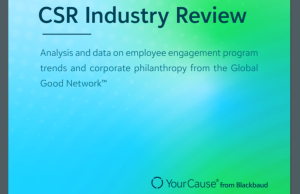Retaining staff can be difficult when unemployment is low. Opportunities for higher salaries can be found outside the sector, particularly in cities experiencing strong growth that might be pricing nonprofit employees out of the immediate area.
Tom Starling, president and CEO of Mental Health America of the MidSouth (MHAMS), formerly Mental Health Association of Middle Tennessee (MHASM), said his organization might soon face the challenge of retaining staff members who can’t afford to live in the fast-growing Nashville, Tenn. area, where employees are giving up a shorter commute to move farther away to less expensive suburbs.
“At some point, you have to look at who can work from home, maybe once a week,” Starling said, adding that while many corporations allow that, nonprofits are probably hesitant. If you’re a social worker, sometimes you want that financial person right there by your side in the office, Starling said, or if you’re an astute business person, you might need the social workers and program staff nearby. “It’s a little hard to find a good generalist in the nonprofit world who feels comfortable not having that person right there,” he said.

Almost one-third (32.57 percent) of nonprofits surveyed in the 2019 Salary & Benefits Report by The NonProfit Times and Bluewater Nonprofit Solutions offer telecommuting as a benefit, making it among the top 10 most popular benefits among respondents. Telecommuting, which allows employees to work some of the time from home, was most popular in the Southeast (41.86 percent) and Northwest (41.46 percent), with all but one region registering far less than 30 percent (South Central, 13.54 percent).
With the emergence of cloud computing and smartphones, telecommuting is far more popular among nonprofits than it was just a few years ago. In 2009, less than 23 percent of organizations in the survey offered telecommuting as a general benefit. The proportion of nonprofits allowing telecommuting has grown steadily ever since, nearing 26 percent in 2015 and eclipsing 30 percent in 2017.
Teleworking takes telecommuting even further, allowing employees to work exclusively outside the office, connected via email, Internet or private network. Like telecommuting, teleworking has slowly become more common, with fewer than one in eight organizations responding a decade ago. In this year’s survey, slightly more than one in five respondents (20.85 percent) offer teleworking to their employees. It also was most common in the Southeast (41.86 percent) and among organizations classified as environment and animals (37.5 percent) and health (22.27 percent).
On average, the most popular benefits last year were:
• Flextime, 57.65 percent;
• Free/subsidized parking, 42.35 percent;
• Business casual days, 41.04 percent;
• Full-time business casual policy, 38.44 percent;
• Employee Assistance Plan (EAP), 37.46 percent;
• Association/professional society dues, 35.5 percent;
• Subsidized training/professional development, 33.55 percent;
• Telecommuting, 32.57 percent; and,
• Domestic partner coverage, 30.94 percent; and
• Employee discounts on goods/services, 21.17 percent
As executive director of The Dibble Institute, Kay Reed is based in Berkeley, Calif., but she hardly ever sees her employees before hiring them because the organization is virtually, well, virtual. The 10 or so employees are scattered throughout the country.
“This would have been impossible years ago,” Reed said. “I do it because I can find and source staff, the best people, and not be confined by geography. I like that a lot. We hold it together. We look for people with previous history to work as a team, individually. It doesn’t work well if we’re taking brand new (to remote work) people,” she said. They have weekly staff calls and share information via databases and Google Docs.
Reed has worked in various aspects of nonprofit management, marketing and development for years. “I just thought, personally, I’m tired of discussions about the employee refrigerator. In my experience, there’s less drama. At least I’m not aware of it, which is almost the same,” she said. Even with the virtual aspect of the organization, Reed said there’s still time to talk personally with employees and catch up.
The Dibble Institute has a professional employee organization (PEO) that handles everything when it comes to human resources, such as maintaining workers compensation, paying state sales taxes, or background checks. “We pay a premium but if we had to hire a full-time staff person, or part-time, we’d probably be paying more to have this service,” she said.
“We’re in touch all the time. We have people all the time who have meetings together,” Reed said. The Dibble Institute also has a physical retreat meeting where employees do fun, social things to build relationships. “It’s not like we never see each other,” she said, adding that in addition to strategy planning, staff spend time socializing.
The $1-million organization is a social enterprise that takes research and turns it into teaching tools for other nonprofits, government agencies or workers.
If you can find the right people, Reed said, then retention is not a problem. “Before we make a final decision, we’ll send that person out with senior staff to do a conference, so we can see them, they can see us,” she said. She aims for people who can work independently, with ambiguous instructions and can be on their own.
She probably finds the right person better than 60 percent of the time but not always, noting someone recently left after 60 days. “I thought she had all the qualifications, but she was just tentative… just never felt confident enough to take off, so it was a mutual parting,” Reed said.
Technically, employees are co-employed by The Dibble Institute and Trinet. “It’s not just a payroll service,” Reed said. “If something goes south and I need to fire someone, I need to consult with them,” she said.
Turnover has been pretty stable at Missoula, Mont.-based Adventure Cycling Association, averaging between 5 and 8 percent per year. Unemployment is low in Missoula, at about 3 percent, which has sharpened the focus on creating a competitive salary structure, said Sheila Snyder, chief operating officer. “Our goal has always been to bring everyone up to the mid-point of the Northwest” — excluding Seattle, Wash., and Portland, Ore. — “so that we can be trying to get those people in and keep them,” she said.
The association is a membership organization with the mission of getting more people to travel by bicycle. The nonprofit has mapped 45,000 miles of the U.S. and parts of Canada and puts out a magazine nine times a year devoted to bicycle travel. It also does advocacy work to improve on themes for cycling, such as working with Amtrak to allow more roll-on service, and working with airlines to allow bicycles as luggage, in the way that golf clubs are treated. The $7-million organization is funded primarily through membership dues, as well as donations and program revenue through products and tours.
Most employees who leave the organization go to a for-profit and there are a couple of new software companies in Missoula that pay better. The organization’s tours director recently left after six years to work for outdoor store REI in Seattle. “We’re not really going to compete with that,” Snyder said.
The association is generous with benefits as a recruitment and retention tool, paying 100 percent of healthcare, dental, vision and life insurance, in addition to a 3 percent contribution to a 401(k). If an employee contributes 2 percent, ACA will match that, so staff can earn as much as 5 percent in their retirement plans. “We’ve worked hard over the last seven or eight years to really create a competitive salary product that we work on,” Snyder said.
The cycling association doesn’t split out vacation or sick time but rolls everything into one category of Paid Time Off (PTO). Employees start at three weeks per year, which goes up incrementally to a maximum of 27 days per year.
Among the favorite benefits of staff is a bike respite. Employees get five days each year to go on a bike trip, either on their own or with one of ACA’s tours. “Since it’s our mission, we like to encourage people to take part in that,” Snyder said. After five years with the organization, it goes up to 10 days, and after nine years, one can get 20 days for a bike trip.
There’s also the Bike Buyer program in which the organization will loan an employee the cost of a bike and they pay if off in a year via payroll deduction. “That’s a really popular one,” Snyder said. An interest-free loan can help staff get the bike that they want, which can be expensive. That program came through a staff survey that someone suggested a few years ago, according to Snyder.
Employees also are granted a weekly fitness hour, the equivalent of one hour per week to do something fitness related. A lot of people will go for a run or a bike ride at lunch, or break up the hour into 15 minutes over four days. Sometimes staff organizes spontaneous bike rides in the summer.
There are few cities in America that have experienced the growth that Austin, Texas, has during the past decade. A bigger challenge for local nonprofits than providing competitive salaries and benefits might be finding affordable office space because tech startups are often outbidding others for space, said Sarah Jovinelly, finance and operations manager at Go Austin / Vamos Austin, a charity that focuses on community organizing around health.
Jovinelly said the organization has made a commitment to adequately compensate employees to compete, if not with local technology companies, with other nonprofits in the region. “Benefits plays a huge role in that,” she said. “We don’t want anyone to ever feel like they can’t afford the things they need. To us, it’s fair and appropriate. It’s a worthwhile investment in employees, like professional development and the perks we offer,” Jovinelly said.
Many of its employees are single parents, Jovinelly said, so it’s important that staff are well compensated and have good, affordable benefits options. “The benefits improved when we became independent; we elected to invest in solid benefits, anteing up to make it affordable for everybody,” she said.
The lowest paid position at Go Austin / Vamos Austin is about $42,000 and ranges upwards, according to Jovinelly, while some organizations in the Austin market pay manager-level positions that are lower.










